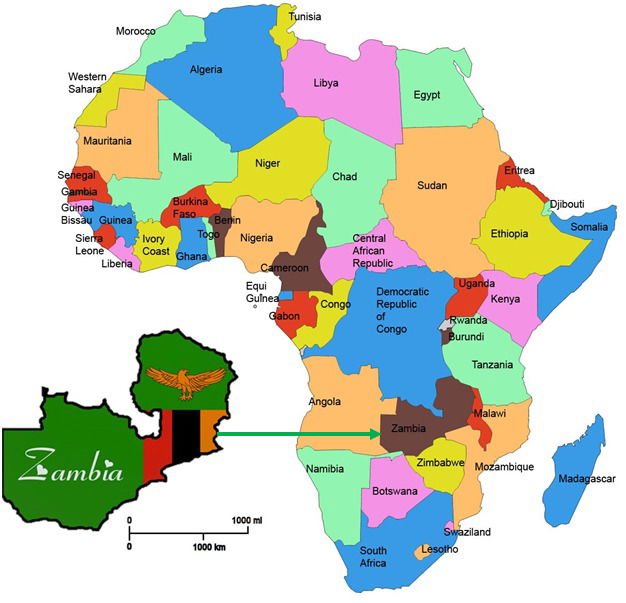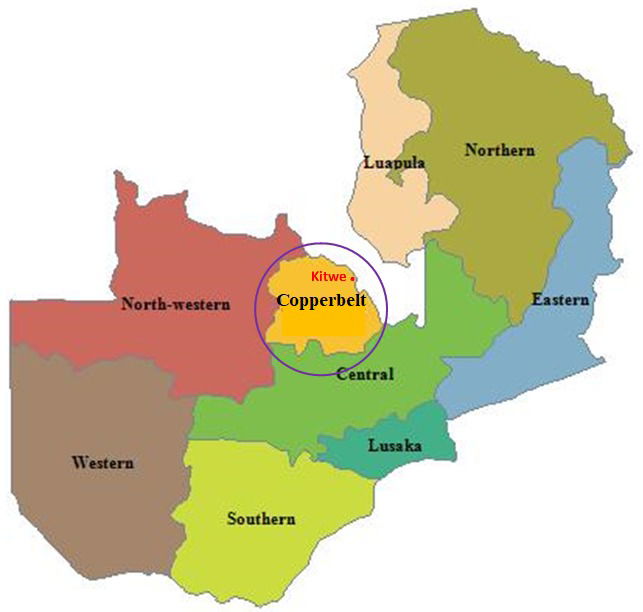Zambia Info

This landlocked country has experienced rapid economic growth over the last decade, as Africa's second largest copper producer after the Democratic Republic of Congo. But its over-reliance on copper has made it vulnerable to falling commodity prices.
Zambia also has one of the world's fastest growing populations, with the United Nations estimating that the Zambian population of 13 million will triple by 2050.
In Zambia ¾ of the population are still in poverty, this is despite economic growth and massive Chinese investment in Zambia. Chinese investment like creating roads and building schools etc, but their investment is connected with their rights to mine and export minerals from Zambia such as copper. Unfortunately, their investment doesn’t impact on the poverty in Zambia and therefore doesn’t help the majority of Zambian people. (A quote from the BBC profile of Zambia 6th July 2017)


The Copperbelt Region
The Copperbelt Province is where the town of Kitwe is situated, it is the second largest town in Zambia, with a population of approximately 401,000 people. The Copperbelt area as it sounds is a mining area and copper and other minerals are mined and then exported for the most part by China to China.
Zambia Population 2022 is approximately 19,634,697
Zambia, officially the Republic of Zambia, is a landlocked country in Southern Africa bordered by Tanzania, Malawi, Mozambique, Zimbabwe, Botswana, Namibia, the Democratic Republic of the Congo, and Angola. The estimated 2017 population of Zambia is 17.09 million, which ranks 70th in the world.
Zambia's estimated population is 19.06 million, while it is the 30th largest country, Zambia is not densely populated with just 17 people per square kilometre (44/square miles), which ranks 191st in the world.
The capital and largest city is Lusaka, with a population estimated at 3 million in 2022. Much of Zambia's population is concentrated around Lusaka in the south and the Copperbelt Province in the northwest. Zambia is one of the most urbanized countries in sub-Saharan Africa with 44% of the population in a few urban areas while rural areas remain sparsely populated.
The most widely spoken language in Zambia is Bantu of the Bemba people but English is the preferred second language.
HIV & Aids
HIV/AIDS is considered the deadliest epidemic in the 21st century. It is transmitted through sex, intravenous drug use and mother-to-child transmission. Zambia is experiencing a generalized HIV/AIDS epidemic, with a national HIV prevalence rate of 17 per cent among adults ages 15 to 49.
Africa is the leader in the world with 65% victims. As per the 2000 Zambian census, the people affected by HIV or AIDS constituted 15 per cent of the total population, amounting to one million, of which 60% estimated were women.
The pandemic results in increased number of orphans, with an estimated 600,000 orphans in the country. It was prevalent more in urban areas compared to rural and among all provinces, Copperbelt Province and Lusaka Province had higher occurrence.
HIV and Aids has left many children as orphans, therefore not having anyone to take care of them they find themselves vulnerable and having to live and fend for themselves on the streets. Even if the children have grandparents this can still be the case, because their grandparents are usually in poor health themselves and don’t have the means to look after their grandchildren. This is where 'Dayspring Ministries' comes in trying to help and feed as many children who live on the streets as they can.
The government of Zambia created an AIDS surveillance committee as early as 1986 and created an emergency plan to control the spread by 1987. By 2005, the government made antiretroviral therapy free for every individual. There were several UN and NGO voluntary organizations that help control the menace.
Kitwe is the second largest town in Zambia
It is in and around Kitwe that ‘Bee Against Poverty Zambia’ want to setup a their project to help firstly 'Dayspring Ministries' and then to help local people to take the first steps out of poverty themselves.
Kitwe is also where 'Dayspring Ministries' operate their 'Streetlife' project feeding and helping the vulnerable children on the streets of Kitwe and other townships nearby. 'Dayspring Ministries' also run two orphanages the Faith Centre for girls at Luangwa and the Grace Centre for boys at Nkana West, they now have over 50 children they are taking care of in the two orphanages.
